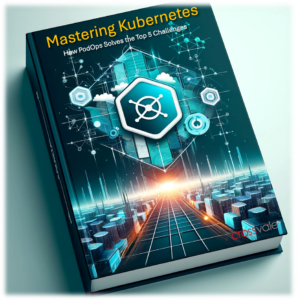We are all looking for better, more efficient ways to do things. In the world of DevOps, this has come down to implementing better systems to manage the work of coding. With our talented people working on multiple platforms across multiple types of infrastructure, often remotely, we have discovered key issues that require solving. One of the ways to help deal with problems that arise from these challenges is called the “CICD pipeline.” This workflow has been proven to make coding work more accurate and more efficient, all without causing any disruptions to a coding team’s overall workflow.
Today, we wanted to walk through the CICD pipeline, its advantages, and how to best implement it. Read on to learn more.
CICD 101
Before we get into the best practices on how to implement a CICD pipeline, let’s set up some guiding principles and definitions.
The “CI” part of the CICD pipeline stands for “continuous integration.” In the world of coding and DevOps, this refers to a coding philosophy, or a set of practices that push members of development teams towards implementing small changes and towards code version control repositories more frequently. Since so many coders and DevOps experts are expected to do their work on multiple platforms, this encourages them to make smaller changes, and to check those changes for precision more frequently. This leads to smaller mistakes, since the code is checked in smaller bites, and it ensures more consistent coding overall.
The “CD” part of the CICD pipeline is “continuous delivery,” and it is essentially the part that picks up where CI ends. It automates the delivery of applications to selected infrastructure environments. Once again, since multiple platforms are used all of the time, an automated delivery system ensures those smaller, frequently checked changes from continuous integration are pushed to the right environments on a regular basis. The result: more consistent and reliable updates.
The CICD pipeline
When we talk about the “CICD pipeline,” we are talking about how these two systems, continuous integration, and continuous delivery interact in a workflow between coders and the systems on which they work. When created together and with intention, a pipeline has the potential to achieve faster feedback, to increase the visibility of the work being done, and to catch bugs early on—before it takes multiple days to find the problem in a single line of code. Overall, it can make coding easier, more effective, and it can lessen the time spent trying to work out the bugs.
Best Practices for Implementing a CICD pipeline
There are a number of best practices for implementing a CICD pipeline, and you can find many blogs that break it down into minute detail. But truly, the system makes and works, which means the only best practice is that you implement the pipeline with intention. Since it is an overhaul, creating a CICD that works requires professional input, universal buy-in, and a dedication to getting the right tools in place to make it work.
Crossvale is dedicated to implementing real, viable changes for teams. These can include revolutionizing workflows and processes through automation and the implementation of a CICD pipeline. If you want to get better work done faster, contact us to learn more about how our consultation services can help you.

